
Rockwell Kent (woodcut).
“Everything crucial comes into being only ‘in spite’. . .. Every new truth comes into being in spite of the evidence: every new experience is acquired in spite of immediate experience.”
Gaston Bachelard
“In German, Heidegger has the voice of what you might expect in a letter you would get at sleep-away-camp from grandma. Juxtapose “being at sleep-away-camp” with “being-in-the world” and an English monoglot starts to hone in on the sound of Heidegger in German without needing to study the grammar. If English translation didn’t provide Heidegger’s phrases with a densely arcane professionalism, as if it were a technical language, while he is being so down-home, it would be much less difficult to understand his work for what it is. I don’t see how people put up with it. Its content is death and imagination as nothingness.”
Robert Hullot Kentor (Interview Platypus, 2011)
“Technology [is] the knack of so arranging the world that we don’t have to experience it.”
Max Frisch
Why and how does one decide something is illustration and not *art*? One definition goes: “An illustration is a drawing, painting or printed work of art which explains, clarifies, illuminates, visually represents, or merely decorates a written text, which may be of a literary or commercial nature.” This doesn’t help much, really. And I’m not actually interested in any answer to this semi rhetorical question. But it is interesting if one goes to one’s search engine of choice and asks that question the first page results will contain a variety of defenses of illustration. One writer suggested that there was a high brow bias (!) against illustration because so much of it was too American (cowboys, patriotism, soldiers etc) thereby implying elite prejudice. This is the growing populist sensibility of the bougeoisie today. The short answer is, since I guess we should at least explore the idea of an answer, that illustration is a design problem. A design process that is directed at solving a problem — for whoever hired the illustrator. Traditionally this meant books or magazines, usually. But movie posters, too and almost any surface that is used for advertisements. In common usage, as a criticism, illustration is meant to suggest reductive explanatory guidance for feelings in the viewer. Or just to impart clear *simple* information. But to call a figurative painter an illustrator, or as having to close a proximity in technique to illustration, is to insult that painter and suggest a less than convincing technique. Now I love design. I am fascinated (to an obsessive degree) with typography. But illustration, because of its commercial underpinnings, can often be revealing of social trends in taste and values.
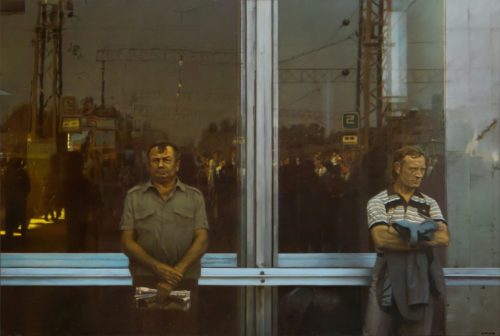
Semion Faibisovich
There is a wonkiness in a lot of illustrators. A quality that can translate into closed aesthetic systems, or sort of twee nostalgia. I can only think of one actual cartoonist or illustrator that I think transcended the separation, and that is R. Crumb. Illustration, because it is reductive tends toward sentimentalism. In fact it is pretty unusual to find illustrators free of the sentimental. Norman Rockwell, of course, was America’s favorite illustrator. Maxfield Parrish was hugely popular, and N.C. Wyeth (who I loved when I was 13 and reading pirate stories). But there were many rather well known illustrators…John Lagatta (who it should be noted, had a very high skill set), Harvey Dunn, Jon Whitcomb (who might actually be far more influential, psychoanalytically speaking, than he is credited with), Arthur Dove (who could also paint), and the turn of the century (20th that is) so called golden age illustrators like James Montgomery Flagg, Violet Oakley (who was very good), Harrison Fisher, Howard Pyle, and Clarence Coles Phillips. But there were many more, and some such as Jules Gurein, also a muralist, who straddled the line. The pulp detective covers of guys like George Dunsford Klein and Lagatta, and the terrific Gloria Stoll Karn exerted enormous design influence and, it can be argued, shaped how film noir was framed, often. James Avati and Rudolph Belarski, and Mort Kuntsler– these guys did a lot of covers between WW1 and the sixties.
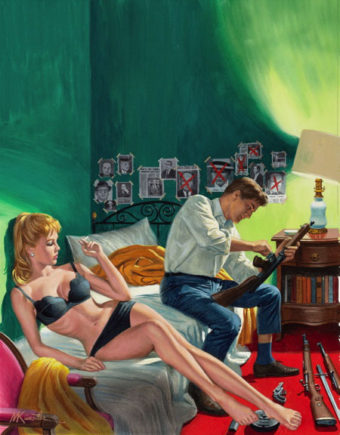
Mort Kuntsler, book cover.
There was Jean Carlu who shaped a motif for posters that everyone recognizes but few could name. Rockewell Kent did some paid illustrations, but mostly illustrated his own travel journals and was perhaps someone who challenged the high/popular dichotomy. Like Arthur Dove, he was also a fine realist painter. Kent was one of the artists collected by the highly influential Duncan Phillips. And it is worth comparing Phillips influence and taste, as well as sense of mission with that of Charles Saatchi nearly a hundred years later. Kent’s reputation would be far greater if his politics hadn’t been so radical. He gifted the USSR with some 80 original works in 1960. Kent and Marsden Hartley were close friends and both saw their reputations suffer (Hartley for his homosexuality, and Kent for his communism) — but both have aged very well, in fact, and serve as part of durable branch of American art that included Hopper and Charles Sheeler, George Ault and Stuart Davis (who like Kent was trained by Robert Henri at the Art Students League). And it is worth noting exactly how influential Henri was, and that his teaching at the Art Students League and Parsons in NY, shaped at least two generations of artists in the U.S. and in particular women artists who he supported hugely.
Notes from the Sullivan-Goss gallery…“During the years leading up to and for the duration of World War II, { Rockwell} Kent dedicated much of his time to politics and workers’ rights. Coinciding with these beliefs, he contributed letters to the American Marxist publication The New Masses (1926-1948). Over the next several years, Kent’s political efforts were met with much disdain from the U.S. government. In 1939, he denied charges that he was a member of the Communist party before the McCarthyesque hearings of the House Un-American Activities Committee. Despite his testimony, officials kept a close watch on Kent, ultimately revoking his passport to travel abroad in 1950.”

Karl Volkner, 1924.
Post WW2 marked the ascension of Norman Rockwell. And to look at his earlier magazine illustrations is revealing; these are the most disturbingly syrupy and maudlin and nauseatingly but quietly jingoistic stuff imaginable. There is a very unlikable quality to Rockwell, a quality more obvious in his early work but one that I suspect he recognized and took pains to bury as his career moved forward. That Norman Rockwell would emerge as the U.S. state’s official face for painting is telling and, of course, disturbing. Never mind this is a guy who worked illustrating covers for the Boy Scout’s yearly calendar. Gerald Ford awarded him the Presidential Medal of Freedom. You cant make this stuff up.
“Today one cannot help wondering what exactly the status of art is — if it has any status apart from the status its commodification and mass reproduction confer upon it — especially since they seem to mock its presumably high status by popularizing it in the mass culture. Everything in it is subject to the common denominator consciousness of ideologizing publicity. Clearly mass reproduction and corporate capitalism work in strange, miraculous, dialectically slick ways, indicating their absolute power over consciousness. They have the magical power to create souvenirs of an experience we never had and no longer need as long as we have the spectacle. ”
Donald Kuspit
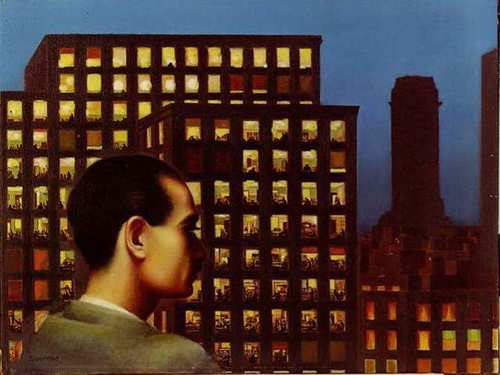
Edward Biberman (self portrait).
“These days, the distinction between art and marketing has all but dissolved; ‘selling out’ is less a term of disparagement than an indication that stocks need replenishing; and art-for-mart’s-sake is the rallying cry of choice.”
Stephen Brown, Anthony Patterson (Imagining Marketing).
My suspicion is that as a society of domination intensifies, notions of art and the experience of art are simplified. So that there is likely a link between illustration and how childish forms of expressions (or infantile, really) are reinforced and a disenfranchisement of serious challenging work runs alongside this. Robert Fliess, back in the 60s, linked aesthetic experience with an oral phase in the infant that precedes mobilization of aggressions, and incorporating of fantasies– an incorporating that acts out such fantasies. The orality of aesthetic experience is a fascinating idea, actually. But before discussing that I want to suggest that the marketing industry has increasingly poached images and ideas from *high art* {sic} or fine art or whatever one wants to label it. Absolute Vodka is the most notable example, but there are dozens of others (BMW, Dove, Silk Cut, Honda, et al.). Stuff such as the Mona Lisa are, of course, sampled all the time, and Rene Magritte seems particularly popular with ad executives. But if one looks at the artwork that is less universally recognized, one sees a preponderance of illustration.
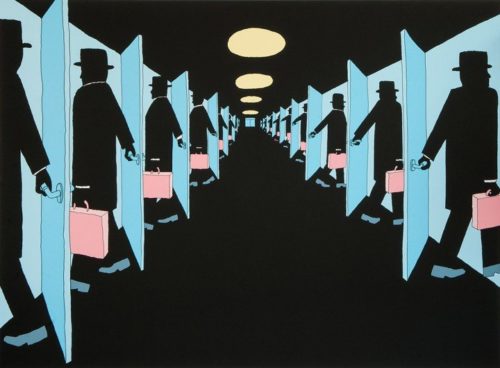
Pushwagner
“…the recent display of Dyson vacuum cleaners, Logitech computer mice and Alessi kitchen implements in Glasgow’s Lighthouse (Redhead 2000) is as nothing compared to the touring exhibition of Barbie Dolls (coming soon to a gallery near you), The Art of Star Wars (currently showing at the Barbican for a limited run) and the Domaine de Bagatelle’s landmark installation of antique garden gnomes (the horror, the horror!). The traffic, moreover, is not one-way, because museums are emerging as a model for twenty-first-century place-marketing. In addition to the manifold museum stores that line the malls of America—let alone museumified marketscapes like NikeTown, Sony Metreon and Ralph Lauren’s flagship store to end all flagship stores at 72nd and Madison—it seems that every self-respecting mega-brand (and many not so megabrands) have ‘museums’ devoted to their illustrious heritage. There’s the World of Coca-Cola in Atlanta, the Volkswagen Museum in Wolfsburg, Cadbury’s Chocolate Museum in Bourneville, Kellogg’s Cereal City in Battle Creek, Colman’s Mustard Museum in Norwich and Bewley’s Coffee Museum in Dublin. The list is endless.”
Stephen Brown and Anthony Patterson
It is hard not to think about early childhood development at this point, in a culture that is so coercively reproducing infantile entertainments. And with this merging of marketing and art, with the fusion of commodity and the imagination, the tendency, intentional or not, has been toward the reductive. Toward a kind of illustration of everything. For illustration is there to avoid ambivalence, to solve the design *problem*, to make the message clear. Advertising is illustration. Now Winnicott suggested that very early on infants went through a stage in which, what he called, a ‘potential space’ was created between the subjective object and the objectively perceived — between the not me and the me extensions. This potential space is linked with play, and Winnicott sees it as the origin of cultural expression. This potential space happens only when a certain level of confidence has been reached. And that level is dependent on a reliable mother figure. Confidence is the introjected evidence of dependability in the mother figure.
“It can be looked upon as sacred to the individual in that it is here that the individual experiences creative living. By contrast, exploitation of this area leads to a pathological condition in which the individual is cluttered up with persecutory elements of which he has no means of ridding himself. “
D.W. Winnicott

Photo courtesy of Stephen Hill.
“The capacity to form images and to use these constructively by recombination into new patterns is – unlike dreams or fantasies – dependent on the individual’s ability to trust.”
Fred Plautt (1966)
“What I say does affect our view of the question: what is life about? You may cure your patient and not know what it is that makes him or her go on living. It is of first importance for us to acknowledge openly that absence of psychoneurotic illness may be health, but it is not life. Psychotic patients who are all the time hovering between living and not living force us to look at this problem, one that really belongs not to psychoneurotics but to all human beings. I am claiming that these same phenomena that are life and death to our schizoid or borderline patients appear in our cultural experiences. It is these cultural experiences that provide the continuity in the human race that transcends personal existence. I am assuming that cultural experiences are in direct continuity with play, the play of those who have not yet heard of games.”
D.W. Winnicott
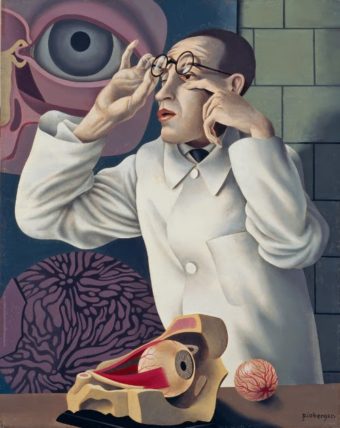
Herbert Ploberger (1928)
The social forces today, the language of Capital, has obviously mediated even infant/mother dynamics. And therapeutics has gradually changed its grammar as well as its ideological bent. The goal is now, even for the most human centered treatment, self mastery. As Nikolas Rose noted, therapeutics has now transformed work into a matter of self fulfillment and psychical identity. And employment is part of a discourse that is framed in therapeutic terms rather than economic. Meanwhile the economic has taken on the grammar of therapy. “Therapeutics has subjectified the mundane, everyday life from house purchase, marriage, childbirth, and divorce has been transformed into *life events*; remedial problems of coping and adjustment” (Nikolas Rose). The self help regime impels the client to ‘work on him or herself’ and assume responsibility for his or her life. One is presumably getting tools for solving (!) the problems that beset one out in the world. A never changing neutral world. All can be solved via expert management. Solving one’s problems is presented in a narrative akin to children’s books illustration.
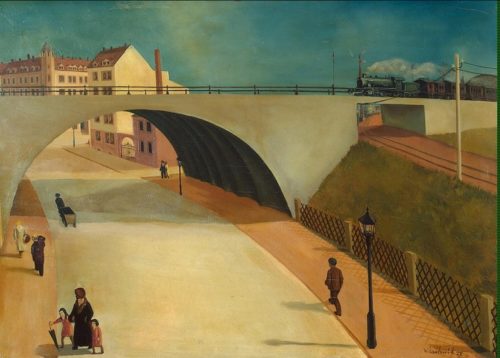
Max Radler
The infant’s relationship with the important caregivers, primarily the mother, establishes trust and confidence in reliable parents. The rhythms and repetitions of this process are found in later creative activity. Painting is so useful an example because there is a kind of primordial aspect to color and form. Music, too, is elemental in that nobody ever said they didn’t *understand* Bach.
“…one can find the intimate aesthetics of mother and child in the rituals and art forms of larger cultures, which seek to increase connection and mutuality among members through the evocation of developmentally early experiences of attunement.”
George Hagman

Rockwell Kent, in Moscow, 1960.

O. Winston Link, photography.
But we live in this period of morbidity in the human. Donald Kuspit is right when he writes… “The issue is how to snap art out of its death trance—living its own death, so to speak—and make it once again a living and lived experience. “ He is not really being metaphoric here. Art has become increasingly expressive of death — even if it in facile strategies tries to keep denying death.
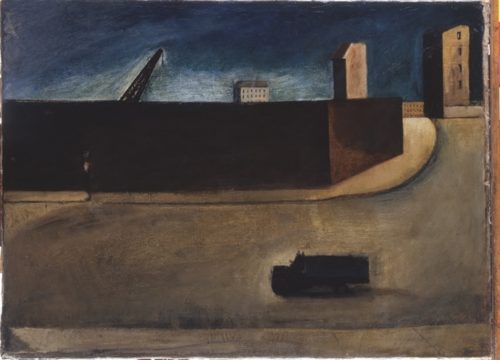
Mario Sironi
One of the things that separates significant artwork from the not significant is an awareness, a kind of epiphanic moment, in which our engagement is personal. It is personal for us because there is a specific indelible identity to the artwork. Harold Rosenberg called it *signature*. It happens in literature and theatre as well, in fact in all mediums I think. Reading Thomas Bernhard or Herman Broch or Dante — there is a person in that work that we are having some sort of conversation with. The mimetic re-narration is built on this historical signature. I had that experience for the first time when I was sixteen reading Nietszche. I had again with Dostoyevsky. Sometimes, one has it with writers like Henry Miller (which I did at 17 or 18), who is less complex certainly, and is writing intentionally to foster that conversation. Which is fine. I had it the first time I saw Pollock. But the point is that when I say it is personal I mean this literally. I read Pinter, when I was in my mid twenties. It was *my* Pinter. It was personal, but it was Pinter nonetheless. That is part of the magic of artwork, of culture. Today, the anonymity of post modern Capitalist society is acute, it is oppressive and today’s audience de-personalizes everything anyway. Codes, fungibility. One cannot view the work of, say, Velasquez or Goya, and not incorporate the historic individual — I remember a show of Goya’s Los Caprichos. And that sense of signature was overwhelming. It was almost unbearable in fact. I find those 80 etchings among the monumental works of human creativity in history. But today I find there is only paralysis, only a kind of death among the living.
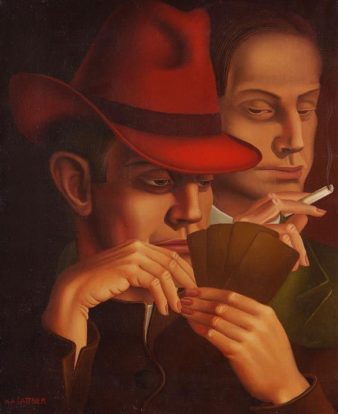
Konrad Adolf Lattner
Benjamain Y. Fong
Fong has a chapter in which he builds on the theories of Hans Loewald. And for Loewald the ego was defensive in nature, or not entirely anyway, but rather *comerged* with reality; that the ego and outer world are constructed in a joint process. The implications are apparent for Fong in how he tries to articulate the ‘Death Drive’ in Freud.
“In Loewald’s view, it is the “infant’s repeated experience that something, in his original feeling a part of him, is not always available, this repeated experience of separateness” that first fractures the “primordial density” from which id, ego, and external world eventualIy blossoms.”
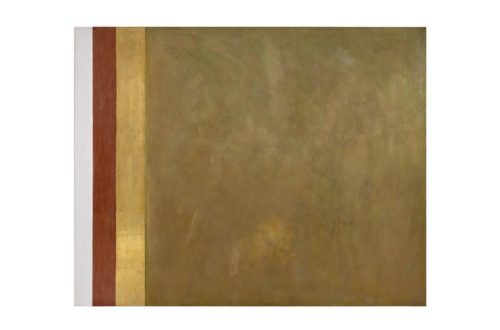
Mary Obering
The emancipation of the infant from the mother, a gradual independence, is fraught with tensions. The breast and the mouth are not one any longer. A libidinal energy is created that looks to reunite into that original tensionless state. For Loewald, contra Freud, the infant is not experiencing outward reality as a threat so much as simply wanting to rid itself of the burden (per Fong) of separateness. The trusted mother lubricates the tension and lessens the burden. The unavailable mother fosters increased tension, and an unbearable burden. But there is a residual tension regardless, because the infant both longs for reunification and also dreads it. Karen Horney articulated this, but more famously so did Melanie Klein. This is the paranoid/schizoid position. But Loewald sees this not as an inherent tendency toward splitting, but simply a sense, an undeniable sense, that even if momentary reunification occurs, the memory of separation remains. This is the dread that accompanies early infant life. It is a dread most everyone carries throughout life; what have I missed? I’ve been here before. Something more satisfying is just around the next corner. In the next city. Somewhere.
Loewald saw fantasy developing here. Imitation of a missing caregiver figure. I’m not sure its quite that simple, but I do see mimetic processes developing very early. For Lacan (who Fong discusses but not at length) the infant recognizes its reflection and hence is an ideal version of itself. Its more complicated than that, but the point here is that, again, there is a disjunction between self and the outside world. These are the gaps or psychic chasms in which the ego develops.

David Graham, photography.
“With the “rational” dissolution of family authority and the “objective administration” of the individual within a variety of educational and marketing apparatuses, this process of internalization is curbed. Failing to reach the proper oedipal pitch, the child no longer internalizes the father’s authority; while thus happily free from the repressive mechanisms of the superego, the subject also now lacks the capacity for self-reflective reason. It thus becomes difficult to say that children become individuals at all…”
Benjamin Y. Fong
There is also the question of repetition, which I consider of massive importance. The stage of late capitalism intercedes in almost all developmental processes.
“By way of analogy, in some polluted lakes, frogs are producing monstrosities when they try to reproduce. The pollution has, as it were, traumatized the ecosystem, and the outcome is frogs producing monstrous miscarriages over and over again. Clearly, the aim of all this repetitive activity is not to re-enact the traumatic scene and produce another monstrosity. The frogs are trying to reproduce just as they have always done; it’s just that for the time being their capacity to do so has been disrupted.”
Jonathan Lear
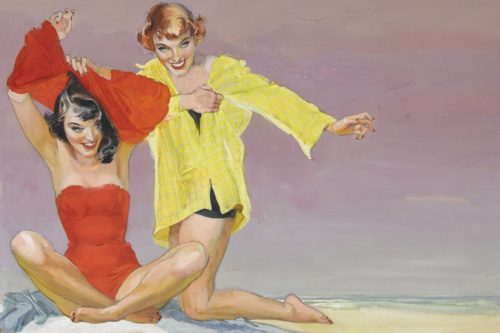
John Lagatta
The western psyche then is one that denies the continuing reproduction of monstrosities. It is the social macro version of the individuals interrupted maturation.
“…the emergence of normality as itself the product of management under the tutelage of experts, and the emergence of risk as danger in potentia to be diagnosed by experts and managed prophylactically in the name of social security ( )…infusion of psychology into already existing systems of authority – that of the commander in the army, the teacher in the school, the manager in the factory, the nurse in the psychiatric hospital, the magistrate in the courtroom, the prison officer in the jail – has transformed them. These forms of authority accumulate a kind of ethical basis, through their infusion with the terminology and techniques attributable (in however a dubious and disingenuous manner) to psychology. Authority, that is to say, becomes ethical to the extent that it is exercised in the light of a knowledge of those who are its subjects. And the nature of the exercise of authority is simultaneously transformed. It becomes not so much a matter of ordering, controlling, commanding obedience and loyalty, but of improving the capacity of individuals to exercise authority over themselves.”
Nikolas Rose
The deformed ego, or weakened ego, or rigid ego (depending who’s terms you want to use) is now in the service of policing itself, of choosing which variety of the same it finds most acceptable. The loss of the reliable caregiver is repeated at a social level. The last U.S. presidential election, an election featuring two utterly disliked and untrusted corporatist war mongering sadistic thieves, two faces or voices of the same ruling class, was and is enthusiastically embraced as a personal narrative. If there is a failure to personalize a relationship to artwork and culture, it is compensated for by a personally customized politico/social public discourse. Feelings of helplessness are repressed again and again in order to psychically survive. Barely.
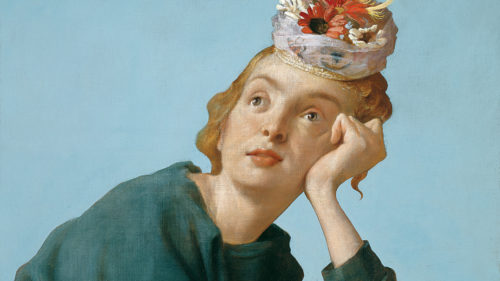
John Currin
The remnants of consumerism is at play here as well. Politics is shopping, and employing oneself to work on oneself according to whatever model one has picked. Identity is bound up with a pseudo choosing process in which one can choose one or another identical versions of the same.
The role of culture has shrunk in significance because the mental and physical exhaustion of the worker of today cannot invest energy in a field with such ambivalent return. The growth of the self-help industry speaks to a shift in how society is perceived. There is no shelf in book stores about social help. There are only political science shelves which are reserved for specialists and academicians.
“The issue is the faltering differentiation of the primitive and of the context of concepts in which it is located. Adorno’s thinking altogether revolves around the development of insight into the primitive. Or, we could put this the other way around, by focusing on the disappearance of the differentiation of the radically new, here in the land of the perpetual “rethink.” The radically new, which artists, especially composers, sought in their work in the early 20th century as the “air of another planet,” developed reciprocally with the insight into the primitive, when the primitive became the impulse of the new. But listen to the phrase,“the air of another planet,” and what there is to hear is that it speaks more appositely to the imminently unlivable air of this “planet.”
Robert Hullot-Kentor (Interview Platypus)
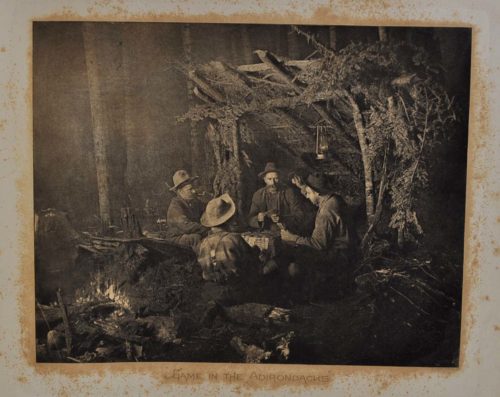
S.R. Stoddard, photography (photogravure), circa 1890. From book by unknown author entitled *Camp Life*. Adirondacks.
Hullot-Kentor mentions how the fashion of barbarism has absorbed the differentiation of the primitive. This is important for any discussion of aesthetics today. Michael Balint used the phrase: “the dissolution of object representation in modern art” , but that dissolution, if its true, has arrived by way of illustration and not abstraction. Of a certain tact in illustration. For it is the prospectus for an object, the surface sign post that reads ‘object located in this direction’. As all of what Rose calls the techne of psychological industries keep inscribing a certain idea of the individual, and shape the illusory, even magical, objectives of *self improvement*, it is taking place or has taken place in an infantile manner. A fashion of infantilism. Marvel Comix or Barbie Doll museum shows, of camp and kitsch — these are ratifications of the childish — and they are also foreclosed — are kept in their own mini sub phylums of taste. These shopping choices that demand nothing of the consumer.
“Things are not done beautifully. The beauty is an integral part of their being done.”
Robert Henri

Xavier Veilhan
There are countless very good artists at work today. There are also far, far more utterly awful and nihilistic practitioners of entertainment product. And these entertainments increasingly encourage almost psychotic attachments. For the idea of entertainment is itself utterly dishonest, but also contradictory. The elevation of bad taste to a form of elite importance (camp is one expression of this) is now deeply embedded in the western codes of culture. The engagement with entertainment cannot be personal. It is a return to absence, to something linked with early aggressivity. I’ve said before the most violent expressions culturally are the most sentimental. Norman Rockwell or 90% of Hollywood rom-coms are where you find the actual gratuitously violent.
Entertainment, the contemporary vision of death. The idea of a noble death has appeared and disappeared throughout the last three thousand years but today there is only a denial of death, and that denial takes the form of either cartoon immortality (Marvell and DC comix) or the living dead. The undead, as a trope, is a way to prolong life. And there is an growing sense of the normalcy of zombies and apocalypse.
“The interiorization of mortality precedes the pictorial act; it is indispensable to its execution.”
Julie Kristeva (The Severed Head)
I will leave off with a quote from Auerbach’s classic Mimesis. I love Auerbach’s writing for one thing but this quote suggests a sensitivity to how art and culture reflect back to us, even hundreds or thousands of years later, a social collective trauma. One feels it in Shakespeare. One feels it in the paintings of the early Renaissance. That ‘something’ was going on. Contemporary culture is creating nothing that reflects back this largeness, this magnitude of pain or wonder. Some of the writing before the second world war, especially German language, comes close. Many of the paintings and drawings as well. But not since mid 20th century do I find anything comparable to great works. There are good, even very good work but it tends to be small. Fragments or unfinished. And that in itself reflects something not insignificant. But wholeness eludes us.
“From the end of the first century of the Imperial Age something sultry and oppressive appears, a darkening of the atmosphere of life. It is unmistakable in Seneca, and the somber tone of Tacitus’ historical writing has often been noted. But here in Ammianus we find that the process has reached the stage of a magical and sensory dehumanization.”
Eric Auerbach
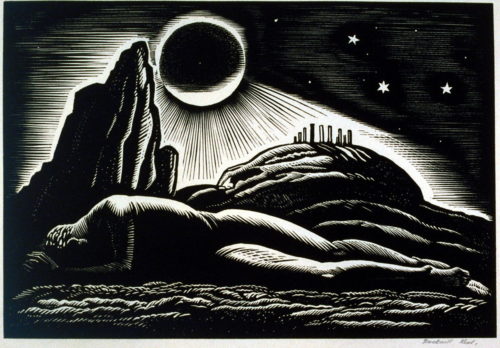
Rockwell Kent (1926). Woodcut.
As always, donations to this blog can be made through the paypal link at the top of the page. Sincere thanks to those who have donated.

I like this premise, that mere illustration is a design problem. That it is only there to convey a message in a most efficient way possible. Economy of means and straight to the point. Good clarification. So I guess there’s illustration as problem solving communication-wise. And illustration or rather the act of making lines, as a primitive gesture which I have a great fondness for, which harks back to cave drawings. Abstraction not being its supposed antidote or contrary even. Nothing inherently liberatory about abstraction – the ideology of all that’s solid melts into thin air. I love those early twentieth century Expressionist woodcuts : Frans Masereel – whose work paved the way for Lynd Ward, also worth looking for. And then to Frederic Pajak although in a more photorealist way, whose work is focused on historical issues through the lens of thinkers such as Nietzsche, Benjamin, Pavese… in a way that the texts act as signal scramblers to the images and vice versa, so as to trouble the already muddied waters a bit more.
There’s also this treatise by Mécislas Goldberg, written in 1905, making a case for a moral of the line and helping to understand the genealogy of the line in the context of modernism, imbued with deformation, broken angles, simplification of forms – thereby paving the way for abstraction and cubism. You mention Robert Crumb, and there’s also Breakdowns by Art Spiegelman, better than what he’s most known for – structurally experimental comics, made in the context of an underground comix scene still dominated by sex, dope and genre stories. There the walk is short from Dick Tracy to German Expressionism… on a slightly longer stretch you get to the Cézanne experiments, Cubism, and the entire convulsion that painting and illustration went through. It was now a matter of ‘how’ things were represented. MAD, in the 50’s, acted as a point of departure of sorts : the focus was, at its best only, on how the illusion of time is created in the juxtaposition of thumbnails on a page.
But this is not my point : what’s interesting in these ‘junk’ drawings made for early 20th century papers (and there I’m thinking of satirical drawings and Krazy Kat in particular) is that they were conveying a violent verve sometimes, but were never intended to last past the day they appeared in the newspaper. So this ephemeral and disposable quality. And then this quality of being printed alongside other gleeful heinous social junk. I think it was class struggle in the making, there. But again I’m not making a point of standing up for the comics, they do raise lots of issues. But that’s the thing, maybe : they never recant their vulgarity – it was on full display, unlike a good deal of the fine arts which were to come thereafter.
Oh and thanks a lot for this Winnicott quote as regards the health of those who are not yet really alive. Illuminating indeed. It’s got its way into my notebook. Your blog is a treasure trove, as always.